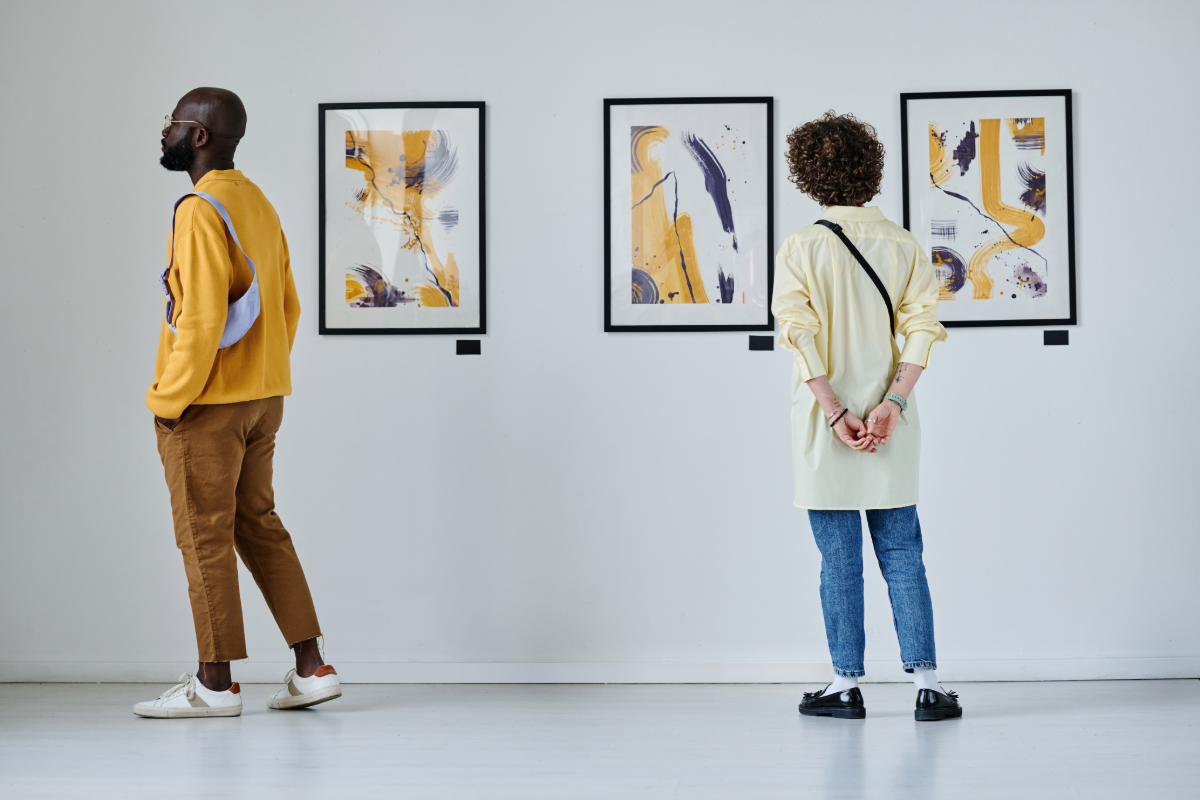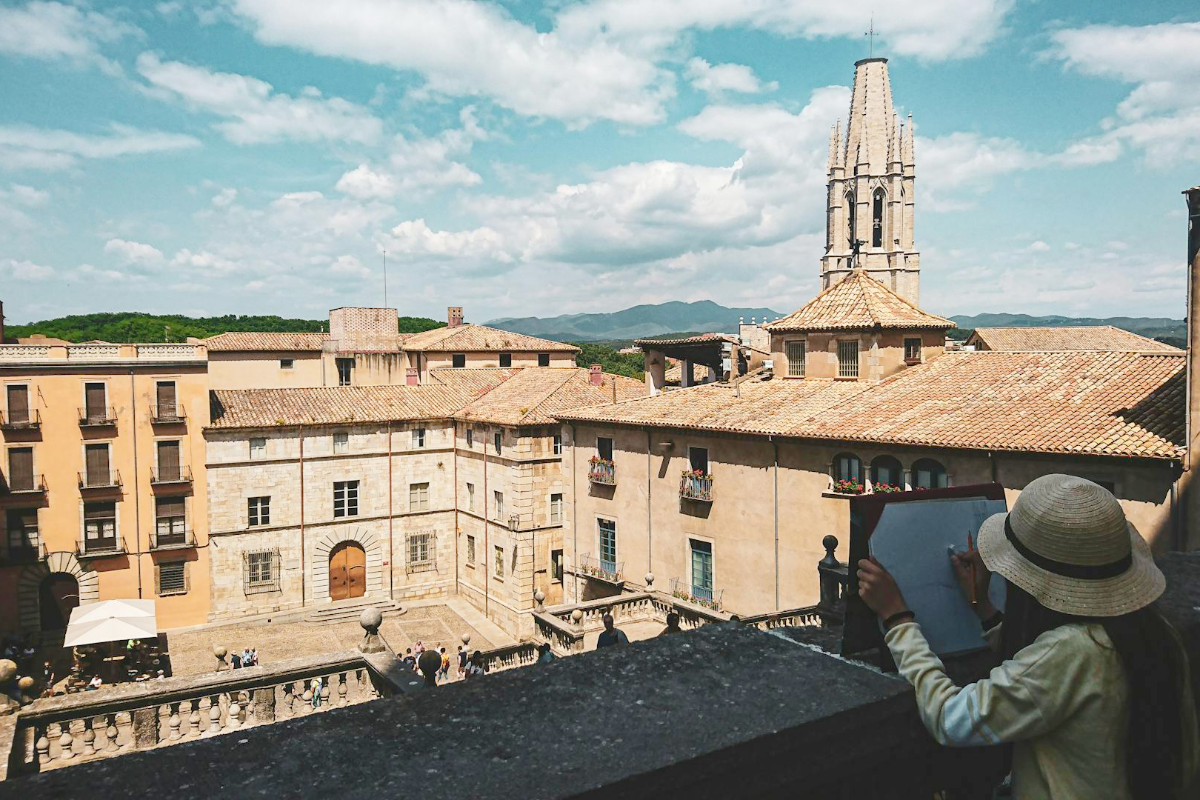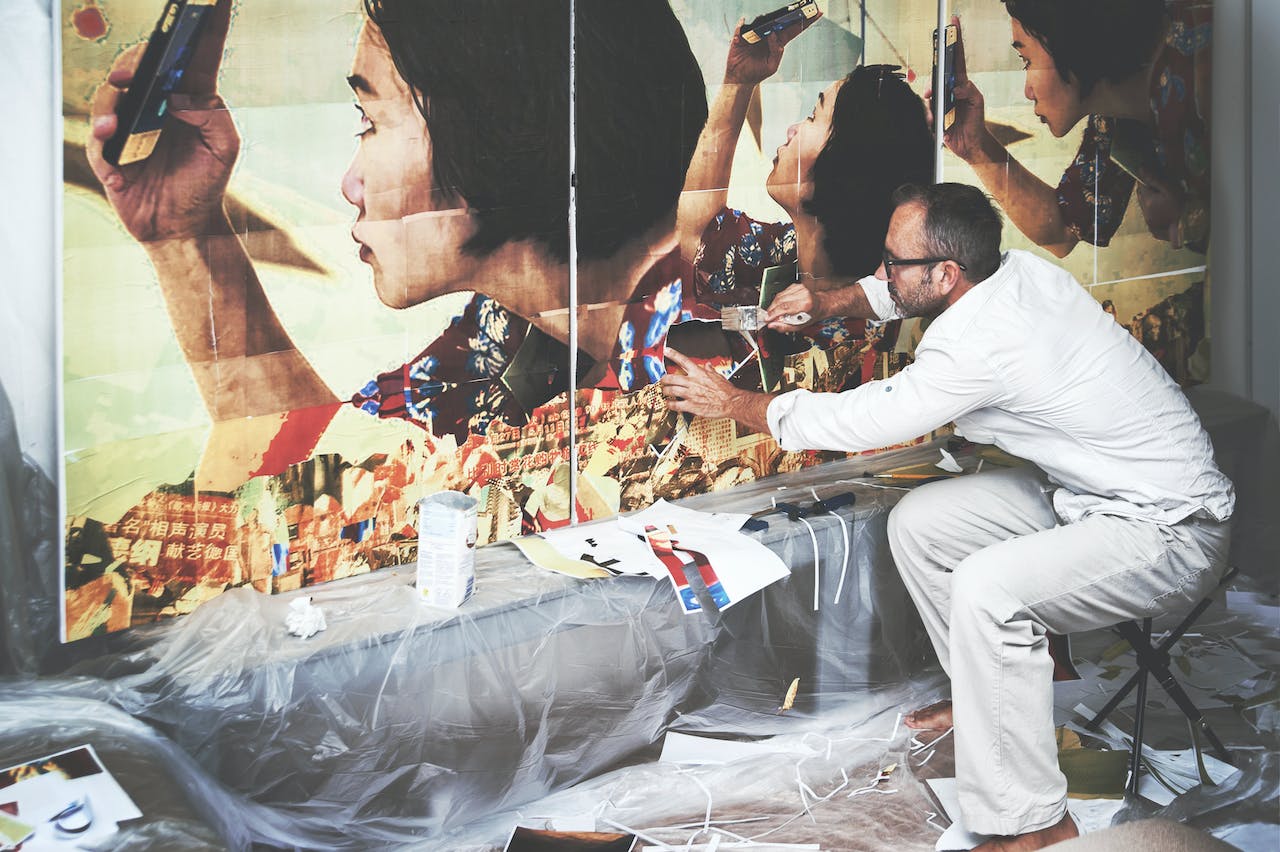Art Marketing 101: How to Write An Artist Biography
An artist biography. Sounds simple, right? After all, who is more qualified to write about your life and career as an artist than, well, you? For many, writing something so personal can be overwhelming. Where do you begin? How do you decide which details to include? What are interested clients and galleries looking for when they read your artist biography? Take heart; we’re here to help! In this guide, we’ll give you a rundown of why you need an artist bio and what you should include.
What is an Artist Biography?
An artist biography is a paragraph (or two) of many talents. It summarizes the story of an artist’s life and career leading up to the present day – instilling trust and allowing artists to share their credentials and accomplishments without speaking a word. A person working in fine arts, photography, or digital mediums may be asked to submit a biography for a press release, printed brochure, or even a book jacket. Solo artists should always include an artist biography on their personal website.
Your artist biography should adhere to the appropriate format depending on the context. For example, if you’re publishing your bio on your website, you’ll want to make sure it’s simplified and tailored for search engine optimization (SEO). On the other hand, your artist bio will likely emphasize your current work on display in a gallery setting. That said, it’s crucial to have an all-purpose text prepared at all times so you won’t be caught off guard. Your artist bio will be required for most competition entries, promotional materials, and gallery submissions.
What’s the Difference Between an Artist Biography & Artist Statement?
As an artist, you’ll often be required to submit an artist bio as well as an artist statement for exhibitions, press releases, publicity tours, and more.
An artist biography will cover your career highlights, education, and a summary of your work to the present moment.
An artist statement is a piece of writing that will accompany your new art selection and explain your working process, inspiration, and motivation for creating your work.
Why Do I Need an Artist Biography?
It’s now the industry standard to have an artist biography prepared. You should include your bio in your physical portfolio and on your website.
Where to Publish Your Artist Biography
- Articles & Interviews
- Book Jacket
- Exhibition Catalogues
- Personal Website / Gallery Website
- Press Release
- Printed Brochure / Program
Where to Send Your Artist Biography
- Art Contests & Competitions
- Art Grant Submissions
- Gallery & Museum Submissions
- Press Releases
Tips for Writing a Compelling Artist Biography
As you’re crafting your artist bio, consider the following tips:
1. Get straight to the point.
Your artist biography is a summary of your life, education, and inspiration. These are the essential aspects of a compelling artist bio:
- Where you are currently based, generally, you should only mention where you were born if it informs your current work.
- Your art medium(s) and distinctive techniques.
- Your inspiration and what you are passionate about.
- Your most impressive achievements. This can include education, awards, high-profile clients, gallery shows, etc.
2. Be mindful of context.
It’s common to have multiple versions of an artist bio, in different lengths. The length and style of your biography should match the context in which it’s being used. For example, if your work is being displayed in a Los Angeles art gallery, you may want to include some of the jargon and artspeak common in the art business. If you’re interviewing for a local newspaper, keep your word count shorter and your vocabulary more general. Also, remember that they may have specific rules to follow if you’re submitting a bio for a gallery program or press release. For instance, the gallery curator may prefer that you describe yourself in the third person.
3. Use the first-person point of view on your personal website.
In many cases, using the first-person voice on your website will help connect with the reader.
4. Select a simple, easy-to-read font.
While drafting your bio, choose a neutral font like Times New Roman or Arial, and use an 11 or 12 point size font.
5. Keep your readers wanting more.
Your artist bio should give your reader just enough information to get a sense of your personality, work, and style. But don’t exhaust your reader with so many details that they have no more energy to give attention to your work, your artist statement, and the rest of your portfolio. Keep it concise and engaging. Aim for between 50 and 250 words, depending on where you’ll be using it.
6. Have confidence!
Avoid using phrases like “I hope you like my work” in your artist biography. Be proud of your work and passion, and let it show through your bio.
7. Make sure your bio is clear, concise, and free of grammar, spelling, and punctuation errors.
Ask a friend to proofread your work and check for typos, or use an online tool like Grammarly to review spelling, grammar, punctuation, clarity, engagement, and delivery mistakes before you submit your artist bio.
At TheArtList, we’re committed to helping artists thrive in their careers. In our ongoing Art Marketing 101 series, we’ll walk you through step-by-step how to make the best online portfolio to showcase your artwork and market your work and personal brand. Subscribe to our Artist & Photographer Mailing List so you won’t miss any upcoming blog posts. You’ll also receive our monthly newsletter showcasing our Artist of the Month contest winners and art calls delivered directly to your inbox!
And if you’re an art gallery, museum, or organization looking to promote your art calls, contests, exhibitions, or events, subscribe to our Submitter Mailing List. You’ll receive our monthly newsletter showcasing some remarkable up-and-coming talent, as well as the occasional discount on our promotional packages!








